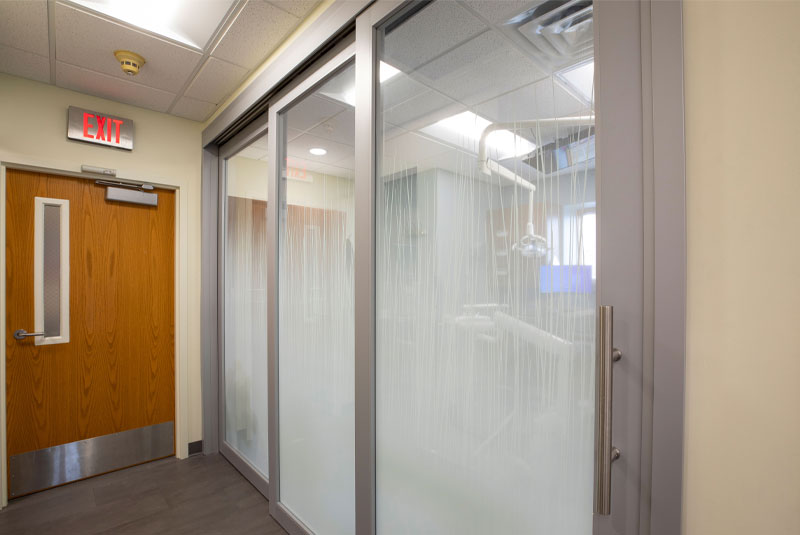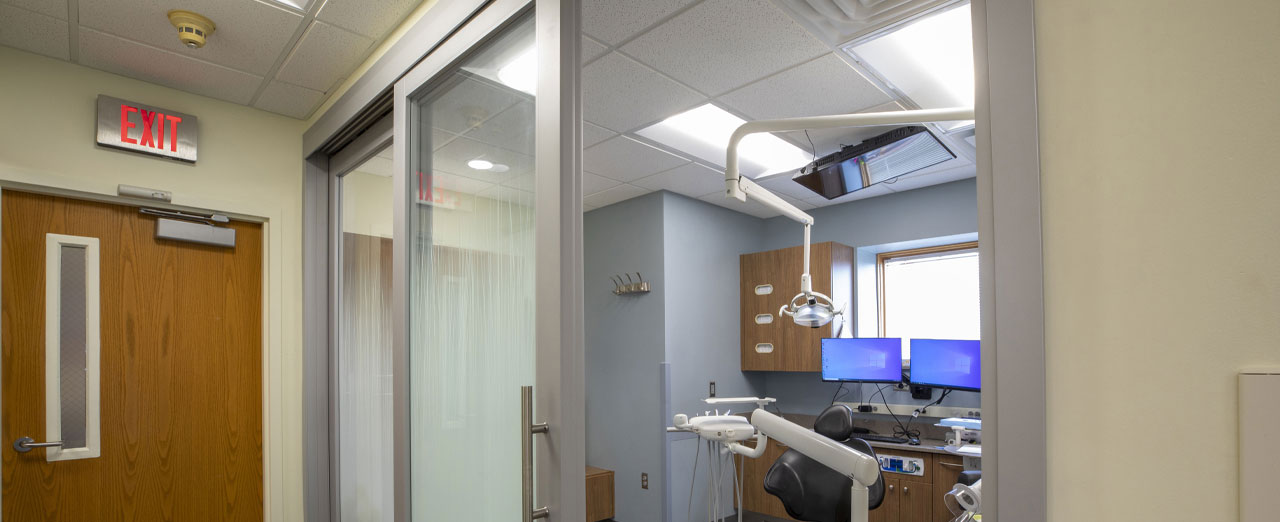
However, while sliding doors increase the amount of useable square feet within a building, their ability to provide wider openings can be hampered by available wall space. Telescopic sliding doors offer an alternative. These door systems provide maximum opening widths by sliding one door leaf over the other. That said, telescopic sliding doors provide benefits that go beyond design efficiency.
Telescopic sliding doors’ innovative features allow flexibility
By overlapping door leaves, telescopic sliding doors create the largest possible opening within the smallest framing dimensions.
In general, these doors offer multiple opening configurations to allow easy access into and out of smaller spaces. Telescoping sliding doors are also available as full-lite glass doors within durable aluminum frames. This design provides the utmost visual connection while simultaneously protecting walls from normal operation. These features, along with hardware that meets Americans with Disability (ADA) standards, help solve design challenges within medical facilities—including contributing to design flexibility.
Telescopic sliding doors offer multiple entrances and exits
In addition to being able to maximize opening widths, telescopic sliding doors can be operated in a number of ways. AD Systems’ XtendSlide™ telescoping sliding door system can be specified in a four-door biparting configuration that is inset into the wall. This option allows the doors to open from the center or the edges, depending on need.
This feature could benefit dental and other specialized healthcare offices as it allows multiple medical professionals clear openings to conduct or assist in procedures without having to reposition patients or pause care. Not only does this support professional need, but it also helps maintain patient privacy and comfort during complex appointments.
Increase visual connection between patient recovery rooms and nursing stations
Because telescopic sliding doors are available as full-lite glass doors within aluminum perimeter frames, they can maximize the visual connection between patient recovery spaces and nurses’ stations. Essentially, at their largest, these commercial sliding glass doors create a glass wall—which can be specified in a variety of opacities and etched designs to find the perfect amount of privacy.
As such, telescopic sliding door systems support patient visibility to nurses, which has been cited as a contributing factor in positive outcomes in several studies. Further, because these systems close, they can reduce sound transfer to minimize disturbances to patient rest. Both options balance the need for connection and privacy within patient recovery areas.
Telescopic sliding doors solve design and operation challenges
In low-traffic areas, telescopic sliding doors offer more opportunities to specify flexible openings. This can preserve more useable square footage inside medical centers and other commercial buildings, but space-efficiency is not the only benefit of telescopic sliding doors. They can also support a more cohesive design aesthetic as well as a more navigable interior since there are more doors that operate similarly.
However, not all telescoping sliding doors are the same. It is important that specifiers choose systems that are compatible with commercial grade operating and locking hardware, including privacy locks, key locks or even electric strikes for access control integration. AD Systems’ XtendSlide can incorporate high-quality ADA-compliant hardware to provide even more value to a project. And because the system sports the same crisp lines of AD Systems’ other door types, it can help simplify installation logistics while also contributing to easy routine maintenance.







